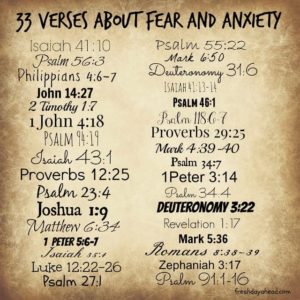Be Not Afraid

James E. Hayes, D. Min., M. Div., Executive Director, Des Moines Pastoral Counseling Center
The scriptures of my faith tradition ooze with admonitions to “Fear Not.” “Be not afraid” is among the most consistent quotes, certainly in excess of 100 times.
I find myself repeating the phrase as our world faces the COVID19 pandemic. In spite of the recitation, the emotion resists releasing its grip on my body, mind and spirit. I worry about the health of my family and colleagues. I wonder about how to best lead the Center in such challenging times. What to do with all this fear and anxiety?
A few quotes to start. There are lots of places in the Tanakh or Christian scriptures if you’re looking for help:

If that’s not your cup of tea, how about some wisdom figures:
“The most important decision we make is whether we believe we live in a friendly or hostile universe.” – Albert Einstein:
“The sovereign cure for worry is prayer.” -William James:
My quote from last month’s blog, Anne Lamott: “HELP!”
Sage words provide a bit of comfort. Poetry often consoles me even more. Here’s a favorite:
“The Peace of Wild Things”
Wendell BerryWhen despair for the world grows in me
and I wake in the night at the least sound
in fear of what my life and my children’s lives may be,
I go and lie down where the wood drake
rests in his beauty on the water, and the great heron feeds.
I come into the peace of wild things
who do not tax their lives with forethought
of grief. I come into the presence of still water.
And I feel above me the day-blind stars
waiting with their light. For a time
I rest in the grace of the world, and am free.
Next on the menu is a mindfulness exercise from one of the most famous practitioners in the business, Tara Brach. She has written extensively about how to manage fear and anxiety through an exercise summed up with the acronym RAIN. As she puts it in a recent blog post:
“Learning to directly face anxiety and fear with the RAIN meditation—Recognize, Allow, Investigate, and Nurture—gives you a pathway to inner transformation and a fearless heart.”
Basically, she asks us to keep things real by recognizing our emotions, which means we need to pay attention. We need to be ok with allowing the emotions to be a part of our day to day, not judging them as good or bad. If you’re feeling afraid, so be it. The investigation asks us to pay attention to what happens when we’re experiencing the emotion, especially in our bodies. Tension? Where? How? Finally, Brach asks us to treat that part of ourselves with compassion and to continually nurture self-compassion, especially in times of challenge.
Does any of this help? Maybe you could share in comments what’s been working for you.
The most comforting sentiment for me is not the command to “Fear not”, but the clause that follows. Jesus said, “Be not afraid, Fear not, ‘I am with you.'” That’s the part that brings me the most comfort and helps me to make meaning of all this. Relationships. I am with you. How can we be present to one another in an age of crisis and social isolation? Prayer is a form of relational conversation that keeps us close to the comforting presence of the source of creation. Reaching out to shut ins who lack necessary social ties brings comfort to both parties. Paying attention to one another as waves of fear and anxiety wash over us at different times will help us through. We’re going to do our best to be present to one another at the Center and the people we serve whether it’s in person or across a screen provided by technology. It’s our mission:
To walk with people through counseling and education to find hope and healing, and live a fulfilling life.
Let us walk together.
